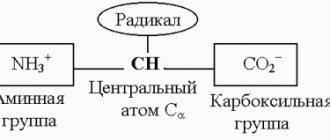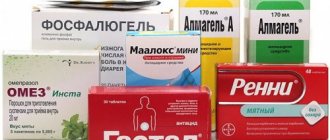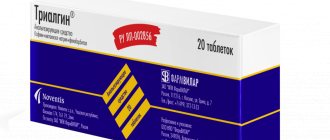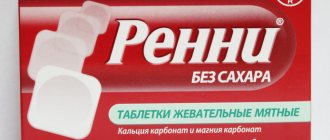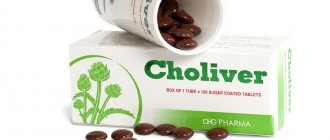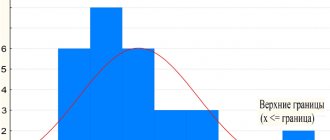Glutamic acid is one of twenty amino acids essential for the body. Participates in nitrogen metabolism, binds ammonia and other substances toxic to the body. It is present in various foods and is part of medicines. Its analogue, made from plant materials, is included in some finished products as flavorings and spices.
When it comes to glutamic acid and the substances produced from it: monosodium, potassium, calcium, ammonium and magnesium glutamate, many are confused. According to some information, glutamate is harmless. Others classify it as a substance that can harm our body and deprive us of our natural sense of taste. What kind of substance is this, actually? Let's figure it out.
Composition of the drug
Glutamic acid can be purchased in tablet form. Each contains 250 mg of glutamic acid. The following additional components are used:
- calcium stearate;
- starch;
- talc;
- silicon dioxide;
- beeswax;
- liquid paraffin.
The tablets are packaged in contour cells, which can be either aluminum or made of PVC. One package contains 10 pieces. It is also possible to buy 60 tablets at once. They are sold in polymer cans, each of which is also packaged in a cardboard box.
Properties
| Index | Standard values |
| Color | white |
| Compound | glutamic acid, empirical formula C5H9NO4 |
| Appearance | crystalline powder, granules, crystals |
| Smell | absent |
| Solubility | good in hot water, alkaline solutions, dilute acids; difficult in cold water; practically insoluble in alcohols, ethers |
| Main substance content | 99–101% |
| Taste | soft, with a metallic aftertaste |
| Density | 1.46 g/cm3 |
| Other | melting point 160ºC; resistant to hydrolysis by acids and alkalis; has low hygroscopicity |
The role of glutamic acid in the body
Glutamic acid is responsible for activating metabolic processes occurring in the brain. It acts as a mediator of nerve impulses, increasing their activity. A sufficient amount of amino acid ensures stimulation of recovery processes in the brain, while simultaneously promoting protein metabolism.
Thanks to ongoing metabolic processes, the functions of the nervous system change and the functioning of the endocrine system is restored. At the same time, glutamic acid helps ensure the neutralization of ammonia and its removal from the body. The absence of glutamic acid deficiency increases resistance to hypoxia.
A person receives glutamic acid from the outside through food. In addition, it is synthesized by the body itself as a result of protein catabolism processes. The substance easily penetrates the blood-brain barrier, which prevents the passage of most drugs from the arterial bed to the brain tissue. The cell membrane is also not an insurmountable barrier to glutamic acid. It undergoes metabolic processes, and up to 7% of the incoming volume is excreted from the body by the kidneys. For progressive myopathy, an effective combination with glycine or pachycarpine has been identified.
What is glutamate and what is it eaten with?
Monosodium glutamate is the monosodium salt of glutamic acid, one of the 20 proteinogenic amino acids that make up proteins. Glutamate is present in large quantities in foods - meat, egg yolks, nuts, cheese, shrimp, fermented foods and some vegetables, and is also widely used in the food industry as a flavor enhancer.
Glutamic acid was first isolated from kombu kelp (Laminaria japonica) in 1908 by Japanese professor at Tokyo Imperial University Kikunae Ikeda. Ikeda later isolated glutamate from the plant proteins of wheat and soybeans and synthesized monosodium salt, the taste of which he later called umami. Monosodium glutamate, obtained in laboratory conditions, does not differ in composition and properties from glutamate, which is naturally present in food.
Currently, umami, along with sour, sweet, salty and bitter, is considered one of the five basic tastes that are recognized by the receptors of the tongue. Glutamate, which is bound in protein, cannot be tasted. Protein denaturation during heat treatment results in the release of glutamate and the appearance of the characteristic umami taste. In the food industry, monosodium glutamate is used as a flavoring additive (E621) to enhance the taste and aroma of products in the form of pure monosodium salt of glutamic acid or hydrolyzed plant and animal proteins.
Myths about MSG
The food supplement serves as an additional source of sodium
Excess sodium intake can cause high blood pressure and increase the risk of heart disease. Every day a person consumes about 1 g of salt, containing 40% sodium. The sodium content in the E621 additive is three times less than in table salt - only 12%. In addition, most of the glutamate we eat each day comes naturally, meaning the sodium intake from the E621 dietary supplement is negligible compared to the amount of sodium found in table salt or ingested naturally.
Monosodium glutamate has a stimulating effect on the nervous system
Endogenous glutamic acid acts as an excitatory neurotransmitter in the central nervous system and is involved in the mechanisms of short-term and long-term memory. This fact has provided the basis for the claim that monosodium glutamate can have an excitatory effect on the activity of the nervous system and cause neurological symptoms.
In 1969, John Olney, a physician and teacher of psychiatry, pathology and immunology, showed that subcutaneous injection of a solution of monosodium glutamate into newborn mice causes acute neuronal necrosis in several brain structures, including the hypothalamus. The scientist also discovered that the effect of glutamate in the early stages of postnatal development is associated with impaired formation of the muscular system, obesity and sterility of newborn females. The researcher concluded that the effects of the dietary supplement were mediated by disruption of neuroendocrine regulation. The findings of John Olney's work have been repeatedly criticized, primarily due to the fact that the study was conducted on newborn individuals, which means the results cannot be extrapolated to the general population. A study by scientists from Denmark showed that consumption of monosodium glutamate (150 mg/kg) can cause neurological and cardiovascular symptoms - headache and increased blood pressure. However, the sample of study participants was only 14 people, which is a significant limitation of the work and does not allow us to draw a conclusion about the effect of the dietary supplement in the general population.
The results of a systematic review conducted in 2016 refuted previous findings of an association between the occurrence of neurological symptoms and the use of monosodium glutamate. The negative effect of glutamate on the activity of the nervous system was shown only when E621 was used in high doses, several times higher than the amount of glutamate in food.
The synthesis of endogenous glutamic acid, which acts as an excitatory neurotransmitter of the central nervous system, occurs in the presynaptic endings of neurons from the amino acid glutamine. The blood-brain barrier prevents the penetration of exogenous molecules into the brain, which means glutamate coming from food cannot affect the activity of the central nervous system.
Monosodium glutamate is not completely absorbed by the body
Glutamate receptors are widely distributed in the central nervous system and gastrointestinal tract. During the digestion process, glutamate, which comes as part of flavoring food additives, is absorbed in the same way as glutamate of natural origin. In young animals, oral administration of monosodium glutamate stimulates the expression of glutamate taste receptor proteins types 1 and 3 (TR1 and TR3) on the cells of the epithelial lining of the stomach and intestines, metabotropic glutamate receptors type 1 (mGluR) on the membranes of the main cells of the stomach, and excitatory amino acid transport proteins (EAAC-1) on cells of the stomach and small intestine. This leads to an improvement in the absorption capacity of the gastrointestinal tract in general and an increase in the efficiency of glutamate metabolism in particular.
In addition, glutamate enhances thermogenesis in brown adipose tissue and is involved in the regulation of the release of certain hormones and neurotransmitters, in particular norepinephrine and glucagon-like peptide 1.
Monosodium glutamate is addictive and makes you eat more
In the food industry, monosodium glutamate is used as a flavor enhancer for foods that already contain natural glutamate. A study published in The American Journal of Clinical Nutrition found that MSG does increase appetite during meals, but also increases satiety after eating.
Chinese restaurant syndrome
In 1968, Professor Robert Ho Man Kwok wrote a letter to one of the leading medical journals, the New England Journal of Medicine, in which he described the appearance of neurological symptoms after visiting a Chinese restaurant. Symptoms occurred within 20 minutes of eating and included numbness in the back of the head and neck, fever, weakness, chest pain and tachycardia, which the scientist linked to high levels of monosodium glutamate in the meals. New research confirming the occurrence of similar symptoms after eating food containing glutamate has given rise to a phenomenon known as “Chinese restaurant syndrome.” However, there is still no direct evidence that it is MSG in Chinese food that causes these symptoms.
According to a large-scale survey (n=3222), side effects associated with the use of monosodium glutamate were noted in less than 2% of respondents. The connection between glutamate consumption and the occurrence of allergic reactions - urticaria, angioedema, allergic rhinitis and bronchial asthma - was also refuted. Further studies showed that similar symptoms can appear when a large amount of monosodium glutamate (5-10 g) is consumed in its pure form, while consuming the same amount of the supplement with food does not cause adverse reactions.
Possible risks associated with consuming MSG
There is still conflicting evidence regarding the physiological effects of MSG. A review article published in the journal Comprehensive Reviews in Food Science and Food Safety shows an association between high-dose MSG intake and increased heart rate, risk of heart attack and cancer, obesity and sexual dysfunction. However, the authors of the work emphasized that the discovered connections were observed only in studies on animals that received very high doses of glutamate, several times higher than the amount supplied from food.
In Drosophila fruit flies, administration of MSG has been associated with increased production of reactive oxygen species, which can cause irreversible DNA damage. Scientists from Queen's University Belfast have shown that high dosages of MSG can disrupt the secretion of glucagon-like peptide 1 in isolated cells of the gastrointestinal tract. However, data on the cytotoxicity of glutamate were obtained in an in vitro experiment using high doses (250–500 μg/ml) of the substance and an exposure duration of 72 hours.
The FDA recognizes glutamate as a safe food additive. The dosages of glutamate used in animal studies are several times higher than the established average daily intake - 13 g of naturally occurring glutamate and 0.55 g of glutamate from dietary supplements. The permissible safe daily dose of monosodium glutamate is 30 mg/kg body weight.
In a study by scientists from China, rats received glutamate at a dosage of 0.5–1.5 mg/kg body weight. The equivalent amount of glutamate for a person weighing 68 kg would be 34–102 g, which is 2.5–7.5 more than the established daily allowance.
MSG is found naturally in protein-rich foods, vegetables and fermented foods. There is still no evidence that the E621 supplement is harmful to humans, although, as animal studies show, in large doses, monosodium glutamate can cause adverse side effects on the cardiovascular and nervous systems.
Source: MSG: What the science says about its safety
Indications for use of glutamic acid
Glutamic acid is primarily used to eliminate problems of the central nervous system. This drug is usually prescribed by neurologists for various abnormalities and diseases. Among which:
- Epilepsy, including petit mal seizures. Glutamic acid is used both in patients with congenital symptoms of epilepsy and in patients who acquired the disease as a result of necrosis of brain tissue caused by ischemic stroke. Such epilepsy can only manifest itself in the form of convulsive spasms of the muscles of the upper body.
- Schizophrenia, accompanied by hallucinations, insomnia, inability to concentrate on something, lack of interest in life.
- Psychoses of various types: both intoxicating and somatogenic.
- Depressive disorders.
- Brain damage as a result of meningitis or encephalitis.
- Hepatic coma.
- Acute poliomyelitis and the recovery period after it.
In pediatrics, glutamic acid is used as a means to help a child catch up with his peers in development. First of all, this concerns delayed speech development. In addition, the product is often used as an assistant in matters of adaptation when a child enters a new environment, in particular, begins to attend kindergarten.
After childbirth with complications, glutamic acid is also prescribed in order to minimize the outcome of intracranial birth trauma.
Polyglutamic acid: what you need to know about the new moisturizing ingredient
Many people have probably heard of hyaluronic acid, which is considered one of the most powerful moisturizing ingredients.
It is used in skin care to combat moisture loss - a molecule of this substance can bind up to 1,000 water molecules. Well, now this component has a worthy competitor - polyglutamic acid. It retains ten times more moisture than hyaluronic acid. Polyglutamic acid (PGA), obtained from fermented soybeans, has a pronounced anti-aging effect, reduces the depth of wrinkles, helps speed up the skin's natural exfoliation process, minimize pigmentation, increase elasticity and perfectly moisturize the skin.
Polyglutamic acid deeply and long-lastingly moisturizes the skin. Humidification is carried out in two directions: deep, due to the low molecular weight of molecules, and superficial - due to occlusion,
- explains Natalia Imaeva, head of the Lantan clinic.
With age, the human body decreases the production of the components of the dermal layer of skin (collagen, elastin, hyaluronic acid). Hyaluronic acid is what forms the intercellular substance of the dermis. It is in the gel formed by hyaluronic acid that fibroblasts are located, in which they form collagen fibrils and elastin fibers.
As the expert says, the intercellular substance largely determines whether the skin will be elastic, with good blood circulation (there are blood vessels in the skin only in the dermal layer and in the hypodermis, subcutaneous fatty tissue), or whether it will be sluggish, atonic, thin, with age-related wrinkles and yellowish color.
PGA is the very component that blocks hyaluronidase (an enzyme that destroys the hyaluronic gel of the dermis) and allows you to keep the dermis in a young state. The acid can be used for most skin types, although it is especially useful for dehydrated skin. However, for those with sensitive skin, it is best to first try PGA on a small area of skin and see if an allergic reaction occurs.
Not only does it attract more water into the skin, but it also creates a barrier that prevents water from evaporating, providing maximum hydration. PGA can be found in a number of serums and moisturizers, such as the Inkey List Serum, Charlotte Tilbury Serum, and Zelens Melatonin Revitalizing Night Serum.
If you are new to skin care and don't know which acid to start with, it is better to consult a specialist. It will help you determine exactly what ingredients your skin needs. And in any case, do not forget about sunscreen. At first, take short breaks (a couple of days) between using acids and gradually increase the number of applications to three to five times a week. It's also okay to take a break from acids from time to time and see how your skin reacts before starting again.
- experts advise.
As a general rule, salicylic acid is suitable for oily skin, lactic acid for dry skin, glycolic acid can be used for a brightening effect, and mandelic acid can be used to lighten tanned and darker skin.
Glutamic acid: instructions
Take glutamic acid strictly according to indications and after consultation with your doctor. Each dose should be taken half an hour before meals:
- for children over 10 years of age and adults, a single dose is 1 g. The daily norm does not exceed 2-3 g.
- for infants (up to one year) - 0.1 g.
- children from 1 to 3 years old - 0.15 g of the drug.
- from 3 to 4 years old, children take 0.25 g.
- at the age of 5-6 years, 0.4 g of the product.
- from 7 to 9 years, half a gram or 1 g at a time.
When treating oligophrenia, the following calculation of a single dose is indicated - 0.1 or 0.2 g per 1 kg of patient weight. The duration of treatment depends on the severity of the patient’s condition and his diagnosis. The minimum duration is 1 month, the maximum is 1 year.
Daily norm
There is no clear data in the medical literature about the body's need for glutamic acid. WHO also makes no recommendations on this matter. Established daily allowances vary in different regions and countries - from 3 g per day in Taiwan to 350-400 mg in the USA and Italy. Doctors agree that children and pregnant women should limit the amount of the substance in their diet.
A comprehensive analysis is used to determine amino acid levels in the body. For the study, blood is taken on an empty stomach. In the resulting material, the level of 32 protein compounds is assessed. Normal values for an adult are 92-497 µmol/l.
Contraindications for use
Glutamic acid is not used in the treatment of patients with:
- hypersensitivity to glutamic acid;
- fever;
- stomach ulcer during exacerbation;
- anemia;
- problems of the hematopoietic system;
- nephrotic syndrome;
- increased nervous excitability.
If the prescription of the drug is a necessary measure, treatment should be carried out under constant monitoring of the patient’s condition. If adverse reactions occur, treatment is stopped.
Deficiency Symptoms
Nutrient deficiencies are often observed in vegetarians and people who follow strict low-protein diets. Deficiency also occurs with a sudden onset of physical activity, kidney disease with nephrotic syndrome, and severe gastrointestinal diseases.
With a lack of glutamic acid, a number of physiological functions are disrupted. Deficiency is manifested by the following symptoms:
- decreased memory and attention;
- depressive states;
- anemia;
- dryness and sagging skin;
- the appearance of gray hair;
- in children - delayed psychomotor development.
To eliminate pathological signs, you should normalize your diet and add more protein foods to your diet. When the acid level is very low, it is replenished with the help of dietary supplements (dietary supplements).
Possible adverse reactions
The following are observed as undesirable reactions in patients:
- sleep disorders;
- abdominal pain;
- frequent loose stools;
- increased nervous excitability;
- chills;
- leukopenia;
- cracks around the mouth and lips;
- short-term increase in body temperature.
Long-term treatment may cause a decrease in hemoglobin levels. In this regard, it is necessary to regularly check the condition of the body through a laboratory blood test.
special instructions
If the treatment is in powder form, it is necessary to rinse the mouth after each dose with a weak solution of sodium bicarbonate to reduce the acidity of the environment and protect the teeth from destruction.
Glutamic acid can be used as a treatment for various neurotoxic reactions that occur while taking other medications.
Taking the drug by children of preschool and school age should be accompanied by an accurate calculation of a single dose to avoid a possible overdose.
